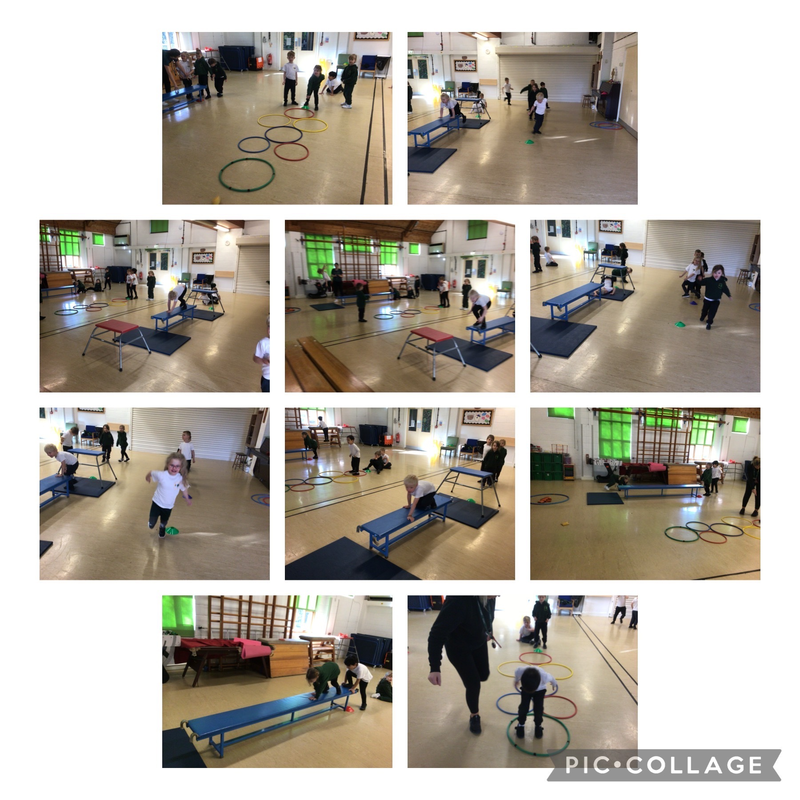Physical Development
Physical activity is vital in children’s all-round development, enabling them to pursue happy, healthy and active lives. Gross and fine motor experiences
develop incrementally throughout early childhood, starting with sensory explorations and the development of a child’s strength, co-ordination and positional
awareness through tummy time, crawling and play movement with both objects and adults. By creating games and providing opportunities for play both
indoors and outdoors, adults can support children to develop their core strength, stability, balance, spatial awareness, co-ordination and agility. Gross motor
skills provide the foundation for developing healthy bodies and social and emotional well-being. Fine motor control and precision helps with hand-eye coordination which is later linked to early literacy. Repeated and varied opportunities to explore and play with small world activities, puzzles, arts and crafts
and the practice of using small tools, with feedback and support from adults, allow children to develop proficiency, control and confidence


Key Skills and Learning Linked to Physical Development
Gross Motor Skills:
Fundamental movement skills – run/running fast, travel on
feet/feet and hands, underhand throw, underhand roll, catching,
vertical jump and land, hop, static balance, balance on body parts
and balance using equipment, side roll and rock and roll, pencil
roll.
• Gross motor skills/movements – climbing, crawling, skipping,
sliding, slithering, shuffling.
• Spatial Awareness – awareness of own space, negotiates space,
finds a space, changes direction, stops.
• Safety Awareness – when moving themselves; when travelling
on, under, over through equipment and apparatus; using small
apparatus and equipment; carrying and moving equipment and
apparatus; respond to safety instructions.
• Apparatus – control and balance when using equipment for
climbing, jumping, scrambling, travelling, swinging; interacts with
small equipment – drop, push, throw, roll, catch, kick.
• Body strength – with and without tools and equipment e.g. sky
writing outdoors, carrying, pushing, pulling, digging.
• Movement of body parts - rotation of waist, shoulder, hip, knee;
bending, flexing and rotation of elbow and wrist; making shapes
with arms and hands, legs and feet; wriggling and stretching
elbows, wrists, fingers, knees, ankles, feet, toes.
• Use of Vocabulary linked to Movement - names of body parts,
directional movement – up down, backwards, forwards, sideways;
speed – fast, faster, slow, slowly, slower.



Fine Motor Skills:
Fine motor skills – demonstrates left/right hand dominance, demonstrates
hand-eye co-ordination; dexterity, manipulation and control when interacting
with materials, objects, equipment and toys; manipulation and control when
using tools and equipment.
Linked to Handwriting/Drawing
• Movement of body parts – rotation of shoulder; bending, flexing and rotation
of elbow and wrist; making a fist; finger isolation, wriggling and stretching
fingers, grasp and release, exploring mark making using fingers and media.
• Strength – shoulder, elbow, wrist, fingers.
• Pencil grip – holds writing tools and implements with a mature pencil grip, uses
appropriate amount of pressure.
• Lines and Patterns - uses a variety of media and tools to scribble and doodle,
draw lines, shapes and patterns: undulating, wavy, vertical, horizontal,
diagonal, straight, parallel, zig-zag, curved, circular, enclosed abstract shapes,
dots.
• Drawing - draws pictures using a range of media and materials, adds detail to
pictures, demonstrates control of tools for drawing, takes care when drawing,
demonstrates accuracy in their drawing.
• Communication - talks about their mark making, representations, drawings
and writing; discusses mark making, writing and drawings with others.
• Manipulate and control a range of tools with increasing accuracy to represent
their ideas and experiences.
• Control of writing tools and equipment – size of letters, correct starting points
for different groups of letters, forms letters correctly.
• Letter formation – draws patterns, understands and follows language linked to
talk about shape and movement of patterns and letters, knows the handwriting
movements involved in the three basic letter shapes as exemplified by ‘l’ ‘c’ ‘r’
and forms basic letter shapes (linked to teaching of
phonics and those letters in their name).





